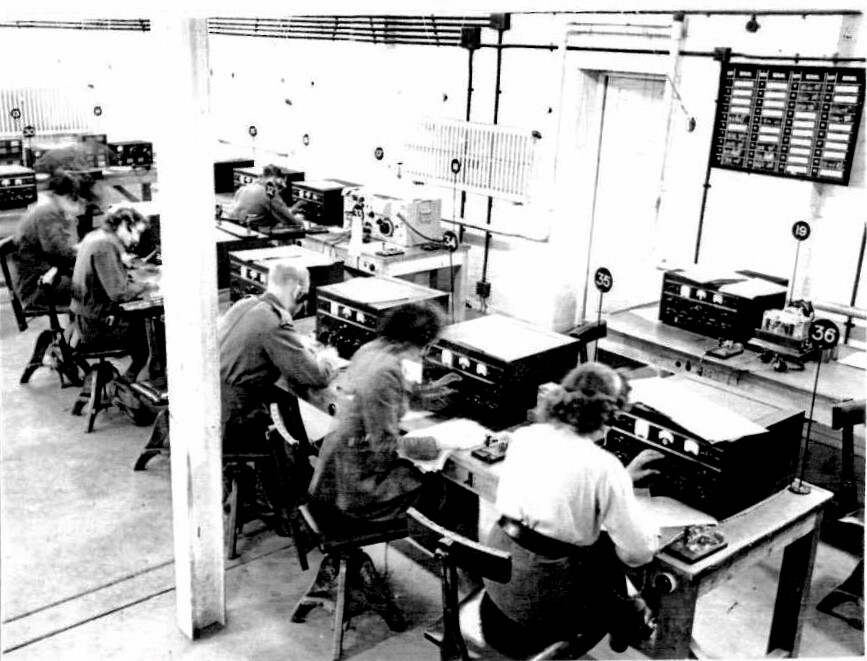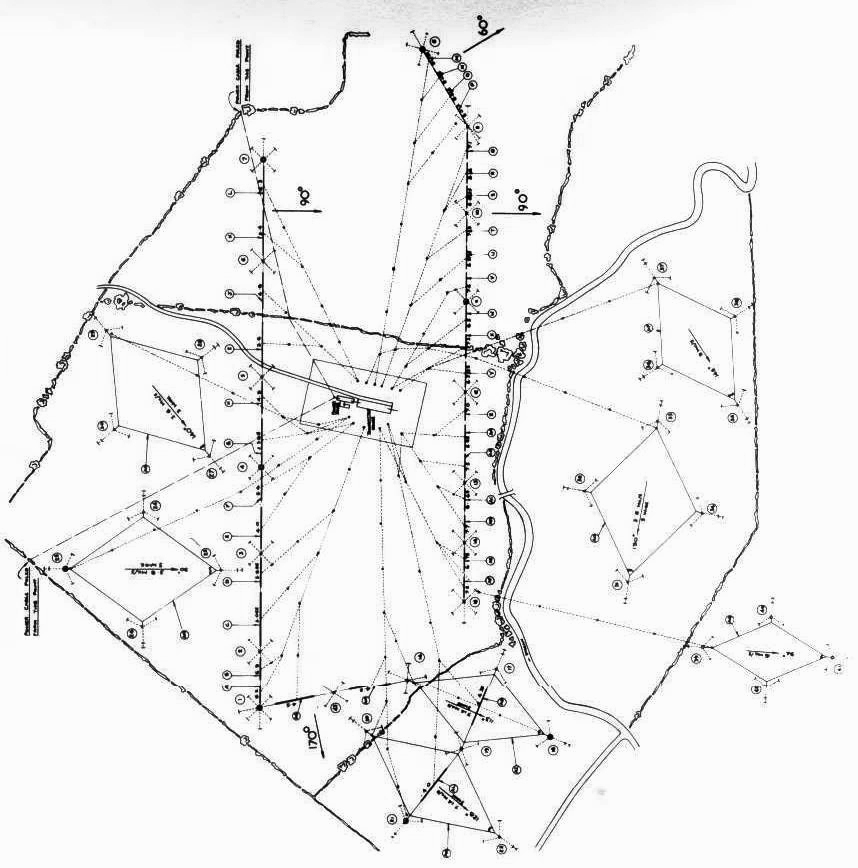SOE Homestation.
It was only in February 1942 that SIS agreed SOE could take control of their own communication to and from their agents in Europe and the two efforts split in June 1942.
In August 1842 SOE was using a transmitter station at Grendon Underwood and a receiver station at Poundon (Poundon House), together they were known as Station-53. It was recognised that this was both overcrowded and lacked the capicity SOE assessed it would need for the number of agents it proposed to send to Europe. So in August 1942 a second transmitter- and receiver station was planned, to be build by December 1942 and even in December 1942 third stations were planned.
Meanwhile work went on to expand and update the original Station 53. When all the building work was finished, towards the end of 1942, SOE's Station 53 comprised:
a) The original Station 53, now called 53a: a receiver station at Grendon-Underwood and a transmission station at Charndon. It was responsible for communication to and from south-west Europe, including France and Belgium.
b) Station 53b: a receiver station at Poundon House and a transmitter station at Godington. Responsible for communication from and to central Europe, including Poland and Czecho-Slovakia.
c) Station 53c: a receiving station at Poundon Hill and a transmission station at Twyford. responsible for communication from and to Scandinavia, including Danmark and Norway.
Poundon Hill is a few hundred metres away from Poundon House.
In January 1943 before work on station 53c started, it was proposed it would be built ad then equipped and staffed by the American OSS, although it was to remain under the control of SOE's OC (Operation Centre?) of all the Station 53 facilities. However, it was acknowledged that the OSS would take about 6 months to generate the trained personnel required so SOE personnel staffed it in the interim.
One of the brick buildings at Godington was still there a couple of years ago, but hidden in the undergrowth and difficult to access. There were also some brick buildings at Twyford; the Mil Int Museum was informed by the HS2 contractor's it was potentially due to be demolished as the rail line was expanded in that area; they were asked to preserve it. Despite numerous emails and calls to them they failed to respond. the OSS Society was told too in case, at the very least, they wanted to salvage some bricks - I'm not sure if they manged to speak with HS2.
Post-war, Poundon Hill remained in government ownership and was probably used latterly by a US agency. It is a few hundred metres away from Poundon House.
Source: SOE Forum.
In August 1842 SOE was using a transmitter station at Grendon Underwood and a receiver station at Poundon (Poundon House), together they were known as Station-53. It was recognised that this was both overcrowded and lacked the capicity SOE assessed it would need for the number of agents it proposed to send to Europe. So in August 1942 a second transmitter- and receiver station was planned, to be build by December 1942 and even in December 1942 third stations were planned.
Meanwhile work went on to expand and update the original Station 53. When all the building work was finished, towards the end of 1942, SOE's Station 53 comprised:
a) The original Station 53, now called 53a: a receiver station at Grendon-Underwood and a transmission station at Charndon. It was responsible for communication to and from south-west Europe, including France and Belgium.
b) Station 53b: a receiver station at Poundon House and a transmitter station at Godington. Responsible for communication from and to central Europe, including Poland and Czecho-Slovakia.
c) Station 53c: a receiving station at Poundon Hill and a transmission station at Twyford. responsible for communication from and to Scandinavia, including Danmark and Norway.
Poundon Hill is a few hundred metres away from Poundon House.
In January 1943 before work on station 53c started, it was proposed it would be built ad then equipped and staffed by the American OSS, although it was to remain under the control of SOE's OC (Operation Centre?) of all the Station 53 facilities. However, it was acknowledged that the OSS would take about 6 months to generate the trained personnel required so SOE personnel staffed it in the interim.
One of the brick buildings at Godington was still there a couple of years ago, but hidden in the undergrowth and difficult to access. There were also some brick buildings at Twyford; the Mil Int Museum was informed by the HS2 contractor's it was potentially due to be demolished as the rail line was expanded in that area; they were asked to preserve it. Despite numerous emails and calls to them they failed to respond. the OSS Society was told too in case, at the very least, they wanted to salvage some bricks - I'm not sure if they manged to speak with HS2.
Post-war, Poundon Hill remained in government ownership and was probably used latterly by a US agency. It is a few hundred metres away from Poundon House.
Source: SOE Forum.

Grendon station.

Poundon station.



















A
A
B
B
C
C


0 graden
90 graden
180 graden


dipool, 6 graden, Norway & Danmark.

dipolen, 90 graden.

Rhombic 145 graden.
Rhombic 94 graden.


Rhombic, 190 graden.

Rhombic, 90 graden.

Rhombic, 140 graden.

dipool, 170 graden.
According to Pierre Lorain, this is the layout of Poundon station 53-B, with transmitter antennas. So these were actually located in Godington.
Source: Pierre Lorain 'Clandestine Operations'.
Source: Pierre Lorain 'Clandestine Operations'.

Padbury Brook??
Godington on Google maps.

bridge

bridge

two buildings

two buildings


Two special Rhobic antennas, see 'Notes' in article 'Commiunicating with the European Resistance'?